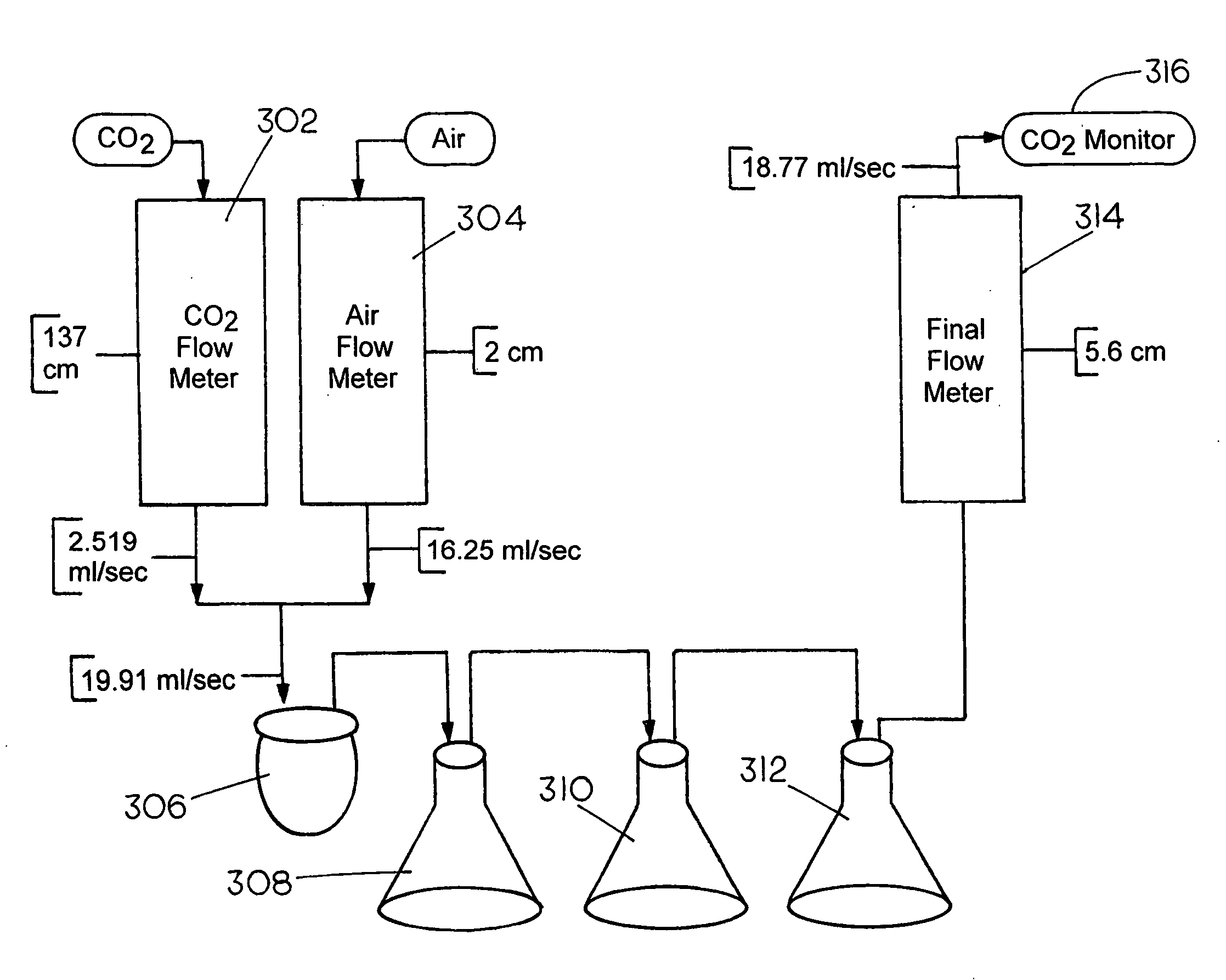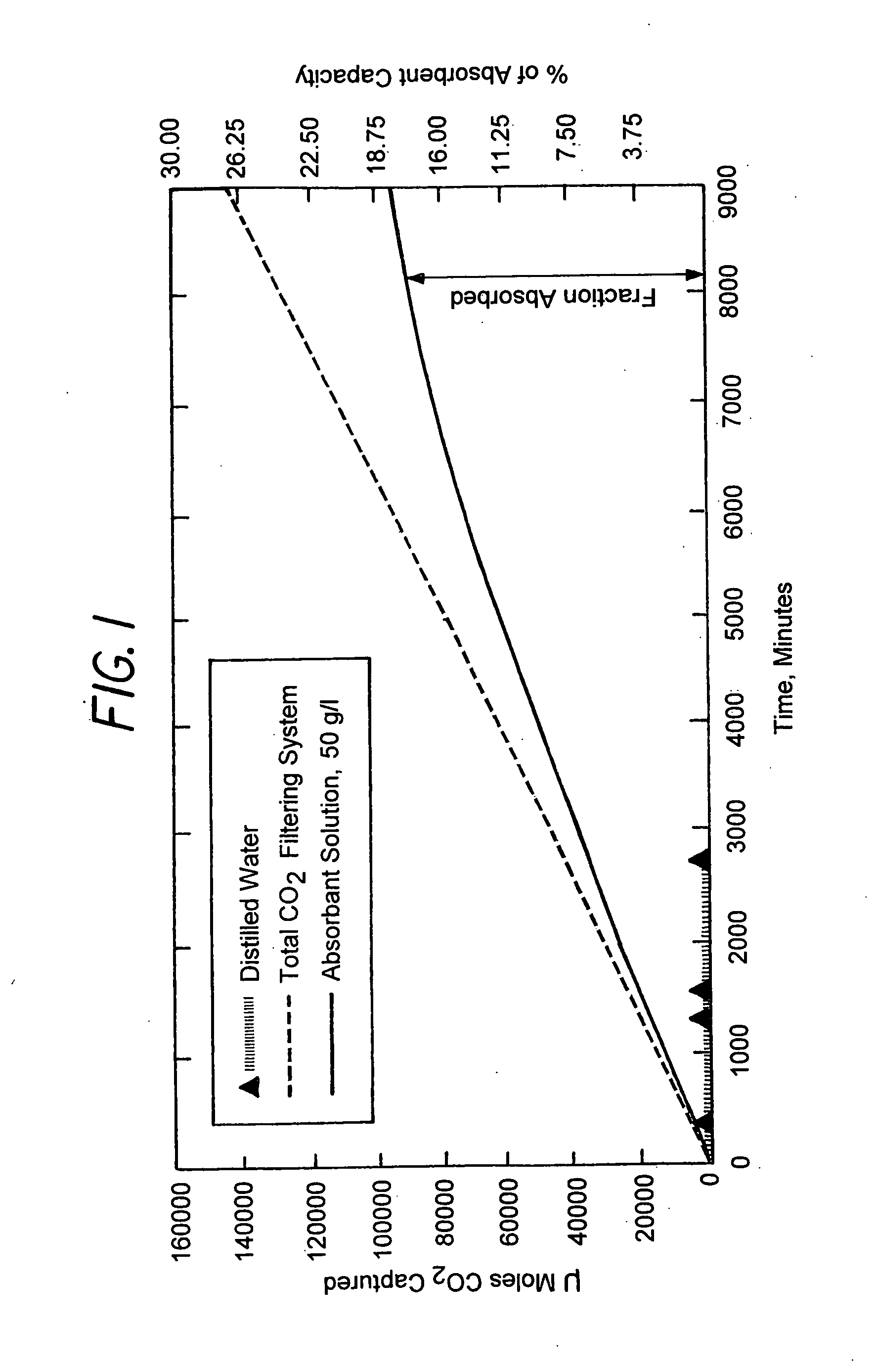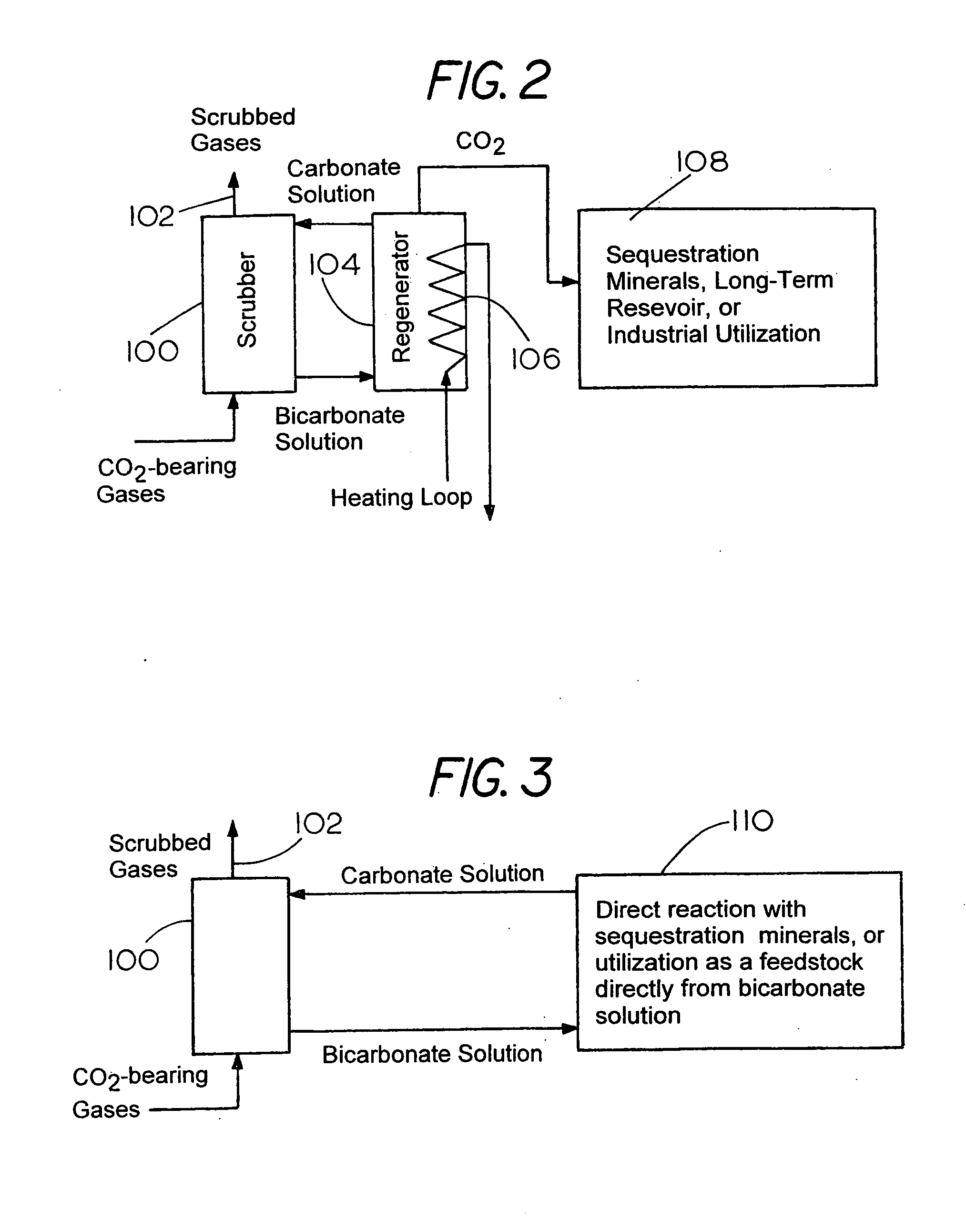Capture and Sequestration of Carbon Dioxide in Flue Gases
a technology of carbon dioxide and flue gas, applied in the field of greenhouse gas reduction, can solve the problems of complex system, high cost, and inability to provide enzymes in the quantities required
- Summary
- Abstract
- Description
- Claims
- Application Information
AI Technical Summary
Benefits of technology
Problems solved by technology
Method used
Image
Examples
example i
[0063]Tests were conducted to determine carbon dioxide absorption with various concentrations of sodium carbonate solutions. These experiments were carried out to determine the concentration of sodium carbonate that is most effective for absorbing carbon dioxide from a feed gas stream containing approximately 16% CO2, which mimics the high CO2 concentration in many flue gases. This revealed surprising information that proved useful for designing a CO2 scrubber based on this absorbent.
[0064]Laboratory tests were conducted on concentrations of sodium carbonate that were varied from 1.875 percent to 20 percent. The values of CO2 concentrations remaining in the gas stream after passing through the scrubber showed that solutions with lower concentrations of sodium carbonate, in fact, produced markedly better performance than those with higher sodium carbonate concentrations.
Materials and Procedures
[0065]The absorbent used was reagent-grade sodium carbonate, purchased fresh from Aldrich C...
example ii 18a + 18b
EXAMPLE II 18a+18b
[0078]This invention has been described herein in considerable detail in order to comply with the patent statutes and to provide those skilled in the art with the information needed to apply the novel principles and to construct and use embodiments of the example as required. However, it is to be understood that the invention can be carried out by specifically different devices and that various modifications can be accomplished without departing from the scope of the invention itself.
PUM
| Property | Measurement | Unit |
|---|---|---|
| Fraction | aaaaa | aaaaa |
| Fraction | aaaaa | aaaaa |
| Fraction | aaaaa | aaaaa |
Abstract
Description
Claims
Application Information
 Login to View More
Login to View More - R&D
- Intellectual Property
- Life Sciences
- Materials
- Tech Scout
- Unparalleled Data Quality
- Higher Quality Content
- 60% Fewer Hallucinations
Browse by: Latest US Patents, China's latest patents, Technical Efficacy Thesaurus, Application Domain, Technology Topic, Popular Technical Reports.
© 2025 PatSnap. All rights reserved.Legal|Privacy policy|Modern Slavery Act Transparency Statement|Sitemap|About US| Contact US: help@patsnap.com



